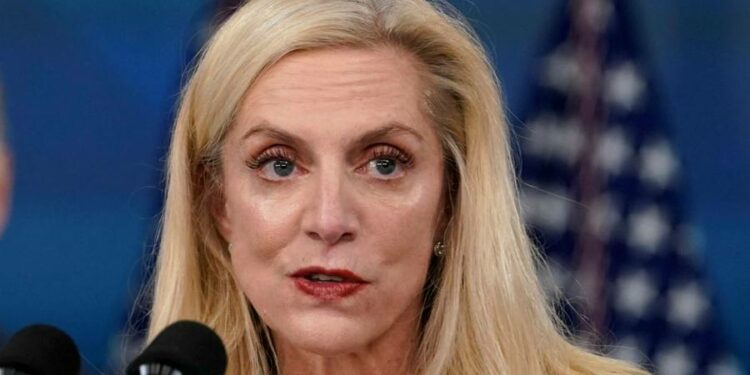A downturn in US and eurozone government debt deepened on Wednesday, and stock markets fell, after a top Federal Reserve official signalled a rapid reversal of ultra-loose pandemic-era policies.
The yield on the benchmark 10-year US Treasury note, which underpins borrowing costs worldwide, added 0.08 percentage points to 2.64 per cent, a level not seen since early 2019, as German and Italian yields also climbed. Bond yields move inversely to their prices.
In equities, Wall Street’s benchmark S&P 500 share index fell 1 per cent and the technology-heavy Nasdaq Composite lost 2.1 per cent, as concerns about higher interest rates in the US and beyond combined with worries about Russia’s invasion of Ukraine and a Chinese economic slowdown.
Europe’s regional Stoxx 600 share index fell 2 per cent, putting it on course for its worst trading day in more than a month.
“There are many things to worry about but the one thing that matters the most is that we had a very accommodative Federal Reserve and we now have one that is on the tightening side,” said Maarten Geerdink, head of European equities at NN Investment Partners.
Fed governor Lael Brainard on Tuesday said the US central bank could rapidly reduce its balance sheet from May. With US consumer price inflation running at a 40-year high and potential further sanctions on Russian energy resources threatening to cause more spikes, analysts expect the Fed to raise interest rates aggressively this year.
Minutes from the central bank’s March policy meeting, to be released on Wednesday, may offer clues on how swiftly this process will occur. The Fed’s holdings have swelled to $9tn since it announced unlimited bond purchases in March 2020, in a move that suppressed Treasury yields and therefore loan rates.
“By removing these asset purchases and selling bonds that are on the balance sheet,” said Juliette Cohen, strategist at CPR Asset Management, “it says we don’t need so much [monetary] accommodation due to the high level of inflation and reinforces the idea they will be hiking interest rates.”
The yield on the policy-sensitive two-year Treasury note rose 0.04 percentage points to 2.54 per cent. Germany’s 10-year Bund yield added 0.07 percentage points to 0.68 per cent, while Italy’s equivalent yield rose 0.13 percentage points to 2.37 per cent.
Equity markets have proved less vulnerable to inflation and Russia’s invasion of Ukraine, analysts said, because the real yield on the 10-year Treasury note — the return investors earn after inflation — is below zero, making equity returns potentially more attractive.
“With cash/bonds still offering negative real yields, investors have been inclined to buy the dips in global equities,” Citi strategists, led by Robert Buckland, wrote in a research note. They cautioned, however, to “expect US real yields to go positive in 2023, which may prove more challenging.”
The S&P 500 is about 6 per cent higher than its closing level of February 23, the eve of President Vladimir Putin’s invasion of Ukraine.
In Asia, Hong Kong’s Hang Seng index dropped 1.9 per cent as Chinese bourses reopened after a holiday. Japan’s Nikkei 225 fell 1.6 per cent.
China’s service sector was hit by its worst contraction last month since February 2020 according to the Caixin services purchasing managers’ index, which measures business conditions across industries such as transportation and leisure. The nation is battling its worst outbreak of coronavirus since 2020, with strict lockdowns in multiple cities including Shanghai.











